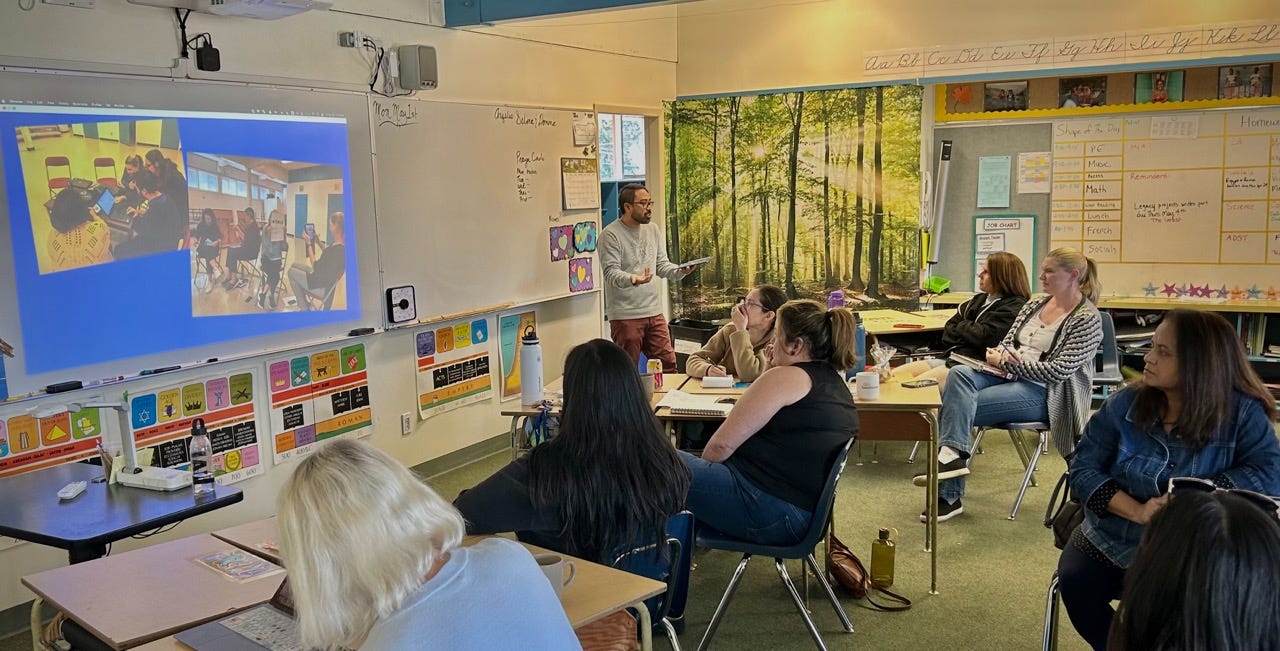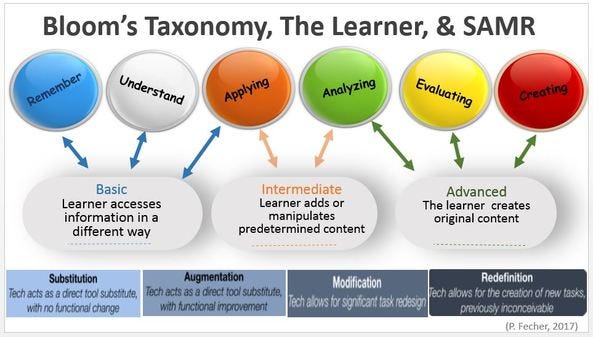Hello, Readers!
Last week, we held a Pro-D Day for the teachers at St Francis de Sales Elementary School in Burnaby. Part of the morning was spent exploring a tech integration framework called SAMR. Now, SAMR doesn’t answer everything, but it does ask some essential questions about what it means to teach with technology. Let’s get SAMR’d!
Assessing your tech integration and reflecting with SAMR.
By Carlo
How can your school’s technology transform traditional teaching methods? We ask this everyday at Classmate. Recently, we had a professional development experience with a group of teachers and educational assistants at St. Francis de Sales Elementary to explore this question further.To guide our discussion, we examined classwork through the lens of SAMR - an educational framework that helps teachers integrate technology into their teaching practice.

The SAMR acronym stands for Substitution, Augmentation, Modification, and Redefinition, and represents four stages of technology integration. For example: Substitution, we use technology to do the same things we could do without it, like using Google Docs to type a paper instead of writing it by hand. In Augmentation, we might use Google Slides or Canva to create a digital presentation with pictures and videos instead of just writing on a whiteboard. For Modification, we use technology to do things in a different way than we could without it, like building a website or app to work collaboratively with classmates on a project, instead of just working alone. Finally, for Redefinition, technology is used to do things that were not possible before. For example, a video call with an author or science educator allows students can ask them questions directly. Recording audio podcasts and videos are a popular way to engage students in projects that challenge their creative and critical thinking.
While SAMR is useful for evaluating how teachers use technology in the classroom, it may not be as helpful for planning future projects. To address this, SAMR was paired with Bloom's taxonomy to better understand how different stages of technology integration can enhance student learning.

During the professional development experience, the staff at SFDS examined educational assignments using SAMR stages and Bloom's taxonomy to think about how technology could enhance or redefine the learning experience for their students. For example, journal reflections were transformed into vlogging, math worksheets were expanded to editing explainer videos, and written essays became podcasts. Through this process, the staff gained a deeper understanding of how Substitution and Augmentation stages can help students remember and understand content, while the Redefinition stages allow students to create their own original content.
The staff were engaged and up for the challenge of transforming their lessons using technology. By using SAMR and Bloom's taxonomy together, they were able to create more engaging and interactive lessons that encourage students to be more creative and collaborative.
If you are interested in learning more about SAMR and other technology in education frameworks, reach out to our team!
Until next week,
The Classmate Team
Super easy Breakout Games with Genial.ly
Are you bored with Slide decks and Prezis? Check out what Genial.ly has to offer and start creating interactive quizzes and games for your students to test their knowledge. Genially has hundreds of templates for a variety of presentation modes. In intermediate, challenge your students to teach their classmates with their own gamified presentation!
Example Breakout Game: DETECTIVES GAME ELEMENTARY

